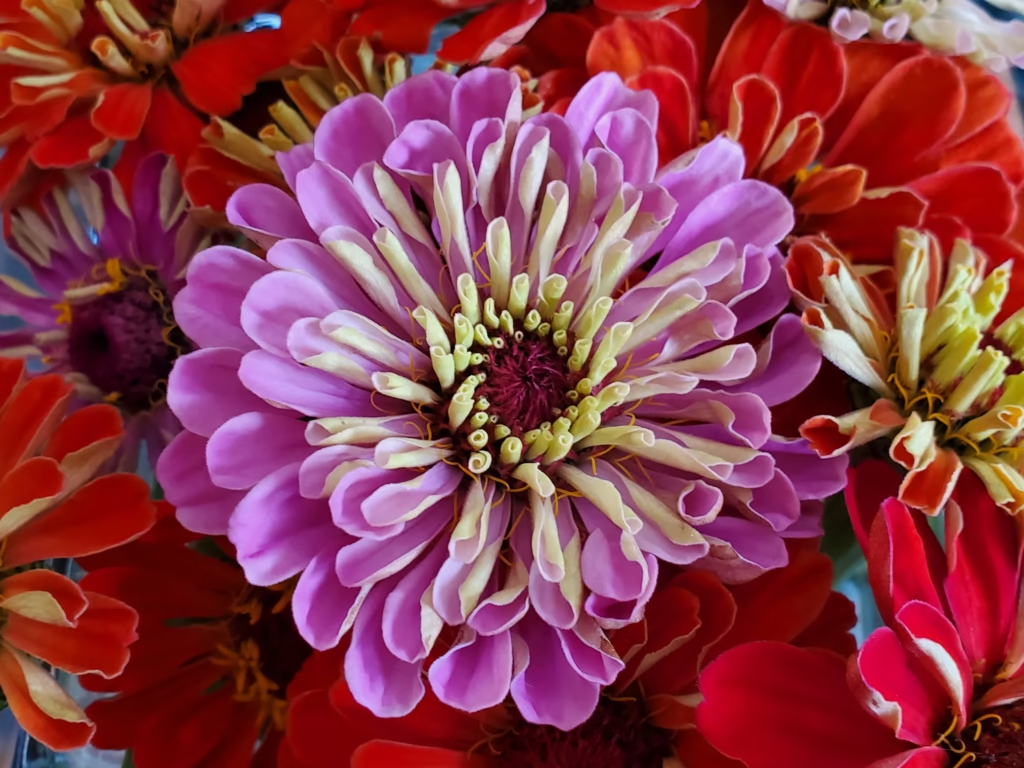
Starting Zinnia seeds indoors is an excellent way to ensure a head start on vibrant summer blooms. Zinnias are popular annual flowers known for their bright colors and long-lasting blooms. Growing them from seeds indoors allows gardeners to control the growing environment and produce strong, healthy plants ready for outdoor planting when the weather warms up. This guide covers when to start Zinnia seeds indoors, how to plant them, and how to care for seedlings until they are ready for the garden.
When to Start Zinnia Seeds Indoors by Zone
The timing for starting Zinnia seeds indoors depends on your USDA hardiness zone. Zinnias thrive in warm weather, so plan to move them outdoors after the last frost.
- Zones 3–5: Start Zinnia seeds indoors about 6–8 weeks before the last expected frost. Typically, this means planting seeds in late March to early April.
- Zones 6–7: Sow seeds indoors 4–6 weeks before the last frost date, usually around mid-March.
- Zones 8–10: Begin seeds indoors 3–4 weeks before the last frost, often in late February or early March.
Check your local frost dates to adjust timing as needed. Starting seeds too early may lead to leggy plants, while starting too late may shorten the blooming season.
Planting Zinnia Seeds Indoors
To plant Zinnia seeds indoors, start with clean seed trays or small pots with drainage holes. Fill the containers with a seed-starting mix, which provides a lightweight, well-draining medium for seedlings.
- Prepare the Soil: Use a seed-starting mix rather than garden soil, which may compact and prevent root growth. Moisten the mix before filling the trays to create a damp but not soggy environment.
- Plant the Seeds: Place Zinnia seeds about 1/4 inch deep. Space them 1–2 inches apart if using trays, or plant one seed per cell in a seed-starting tray.
- Cover and Label: Lightly cover the seeds with soil and gently press down. Label trays with the Zinnia variety and planting date.
- Water Gently: Mist the soil with water to keep it evenly moist. Avoid overwatering, which can lead to damping-off disease.
Providing Light and Warmth
Zinnia seeds need warmth to germinate and bright light for healthy growth. Maintain temperatures between 70–75°F for optimal germination.
- Grow Lights: Place trays under grow lights as soon as seeds are planted. Set the lights 2–3 inches above the soil and keep them on for 14–16 hours daily. Raise the lights as the seedlings grow to prevent burning.
- Temperature: Use a seedling heat mat if your indoor temperatures fall below 70°F.
- Moisture Control: Cover trays with plastic domes or clear lids to retain moisture until seeds sprout, then remove covers to prevent mold.
Zinnia seeds typically germinate in 5–7 days. Once seedlings emerge, thin them out if multiple seeds sprout too closely together.
Fertilizing Zinnia Seedlings
Zinnias benefit from light fertilization during their early growth stages. Start feeding seedlings once they develop their first true leaves.
- Diluted Fertilizer: Use a half-strength liquid fertilizer high in phosphorus to promote root growth. Feed the seedlings every 10–14 days.
- Avoid Overfeeding: Too much fertilizer can lead to leggy growth, so use caution and follow label instructions.
Hardening Off Zinnia Seedlings
Before planting Zinnias outdoors, seedlings need to adjust to outdoor conditions through a process called hardening off. Start this process about 7–10 days before transplanting.
- Gradual Exposure: Move trays outdoors for 1–2 hours in a shaded, sheltered spot on the first day.
- Increase Time and Sunlight: Each day, increase exposure by 1–2 hours and gradually introduce seedlings to more sunlight.
- Protect from Wind and Cold: Avoid leaving seedlings out during windy or cold conditions. Bring them inside at night if temperatures drop below 50°F.
Planting Zinnias Outdoors
Once seedlings are hardened off, plant them outdoors after the last frost date for your zone. Zinnias prefer full sun and well-drained soil.
- Prepare the Garden Bed: Loosen the soil and mix in compost to improve drainage and fertility.
- Spacing: Plant Zinnias 6–12 inches apart, depending on the variety. Taller varieties need more space for airflow.
- Watering: Water thoroughly after planting to help seedlings settle in. Continue watering regularly to keep the soil moist but not waterlogged.
Caring for Zinnias After Planting
Zinnias grow quickly and begin blooming about 8–10 weeks after planting. To encourage continuous blooms:
- Mulching: Add mulch around the plants to retain moisture and suppress weeds.
- Deadheading: Remove spent flowers to promote more blooms throughout the season.
- Feeding: Fertilize with a balanced flower fertilizer every 4–6 weeks to support healthy growth.
Happy Zinnia Gardening
Starting Zinnia seeds indoors allows gardeners to enjoy earlier blooms and healthier plants. By following the steps for timing, planting, lighting, fertilizing, and hardening off, you can grow beautiful Zinnias ready for transplanting into the garden. With proper care, these colorful flowers will brighten garden beds and containers all summer long.
Please be sure to check out my Gardening Blog Post Page for more tips on all types of gardening. Including Seed Saving, Seed Starting, Orchids, Water Gardening, Coldframe Gardening, Indoor Bulb Gardening, Hydroponics, Container Gardening, Mums, Herbs, African Violets, planting Bulbs, Flower Gardening, Vegetable and Fruit Gardening, Indoor Houseplants of all kinds, Cactus, Succulents, Hanging plants, Deer resistant plants and even Bird, Bee, Butterfly and Hummingbird Gardens!
